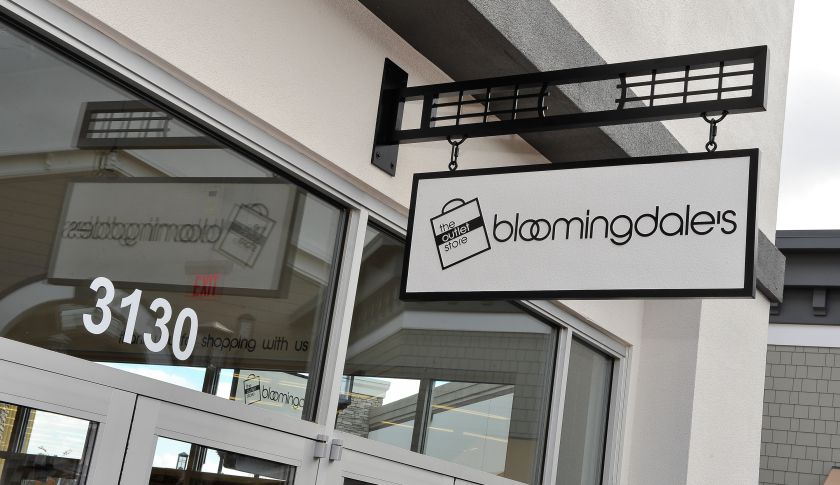Franchising, retail, business

09/03/2015
Bloomingdale’s plans to open its first urban outlet store, the latest luxury chain to open a discount store in a city rather than in suburbia.
It used to be that city dwellers had to go for a long drive to be able to shop at outlet stores and buy high-end fashion brands at steep discounts. No more.
Last week, Bloomingdale’s said it was opening an outlet store on Manhattan’s Upper West Side this autumn, becoming the latest luxury department store to engage in the discount wars that have now come to city centers. It will be the retailers’ 14th outlet store overall (Bloomingdale’s, a unit of Macy’s M -0.67% , has 39 regular department stores) and its first in an urban, rather than suburban, center.
Outlets emerged in the 1930’s and were initially designed to be clearance venues, located an hour or two by car from large metro areas. For decades, retailers kept a Chinese wall of sorts between their full-price stores and their outlet stores, emporia where shoppers can buy closeout merchandise for 50-70% off, as well as lower-priced (and frankly, lower-quality) product, to protect a cachet, and pricing power, at risk if bargain hunters demand the same deals at full-price stores.
But as consumers developed an insatiable appetite for deals, especially during the Great Recession, so called “off-price” retailing proved to be a rare bright spot in retail, prompting major expansions of outlet chains, shrinking the distance to outlet stores.
Add to that the meteoric rise of stores like TJX Cos’ TJX 0.29% T.J. Maxx and Marshalls, and Ross Stores ROST 1.01% , off-price retailers that siphoned off a lot of the department store clientele during the recession, and stores like Saks Fifth Avenue, Bloomingdale’s and Neiman Marcus were left with little choice but to take part, lest they miss out to a rare bright spot in retailing.
And now, the battle lines are in the heart of America’s cities.
“Many have found that the lower price selections within their core markets as opposed to outlet centers, capture new customers as well as offer existing main line store customers an alternative when they are looking to supplement their wardrobes,” Michael Brown. a partner in the retail practice of A.T. Kearney, a global strategy and management consulting firm, told Fortune.
“In terms of why cities vs. traditional outlet malls or suburban malls, we have seen a trend towards people moving back to the city, especially millennials, a highly desirable demographic.”
While single brand retailers like Coach COH -0.39% and Michael Kors KORS -2.50% still hew to the strategy of keeping outlet stores in specialized malls, department stores have little choice but to face the competition head on: there are now some 2,100 T.J. Maxx (which sells high end brands all the way up to Prada) and Marshalls stores in the U.S. and TJX says there is room for 3,000- in Manhattan, there was only one T.J. Maxx in 2010, and now there are 5, along with a Marshalls. Local off price chain Century 21 Department Stores has opened a second large New York store.
All this has put department stores on the defensive.
Saks, a unit of Hudson’s Bay Co HBC , last year announced a plan to open a full service department in Lower Manhattan in 2016, and a Off Fifth outlet store a year later, its first in New York City. It will also open a 25,000-square-foot store in White Plains, New York, a city 30 miles north of New York, this month. Saks, which now has 80 Off Fifth stores (double just a few years ago, with plans to double in the coming years), has traditionally operated its outlets in specialized malls.
Neiman Marcus’ Last Call stores are traditionally in outlet malls, but its newer, smaller Last Call Studio format is squarely aimed at urban shoppers: in the fall, it opened a store in Brooklyn, N.Y., following openings in major cities like Dallas and Houston.
Nordstrom JWN has typically opened its Rack discount stores near its own department stores, but it too has gone urban: it opened its first Manhattan Rack store in 2010, eight years before the expected opening of its New York City full-line stores. Nordstrom will nearly double the number of Rack stores to 300 by 2020, with many in urban areas.
This is not to say that traditional outlet mall growth will slow. (According to the International Council of Shopping Centers, there were 340 outlet malls in the U.S., compared to 42 in the late 1970’s.)
Simon Property Group SPG opened two new outlet malls last year, in Tampa and Tuscon, while Tanger Factory Outlet Centers SKT will open 3 such malls this year.
Still, you can expect cities to be at the front lines of the outlet battles.
“This is a great opportunity to expand the reach of our brand to value-conscious customers as well as better serve the expansive needs of our core west side customers,” said Tony Spring, CEO of Bloomingdale’s. “We see Bloomingdale’s Outlet as a growth vehicle for our company as we continue to refine and roll out stores based on our learnings over the past several years.”
Fonte:http://fortune.com/2015/03/09/bloomingdales-outlet-discount/?utm_content=buffer176c4&utm_medium=social&utm_source=twitter.com&utm_campaign=buffer